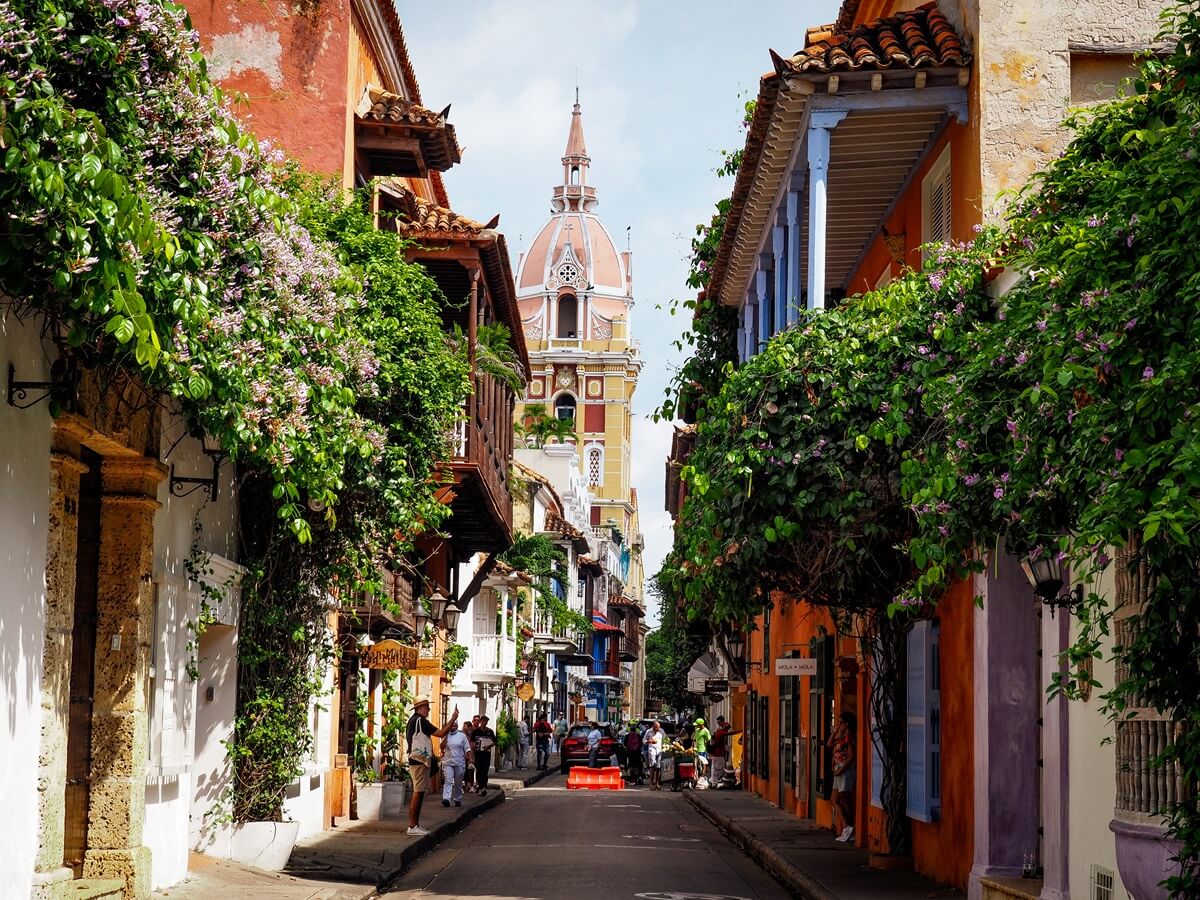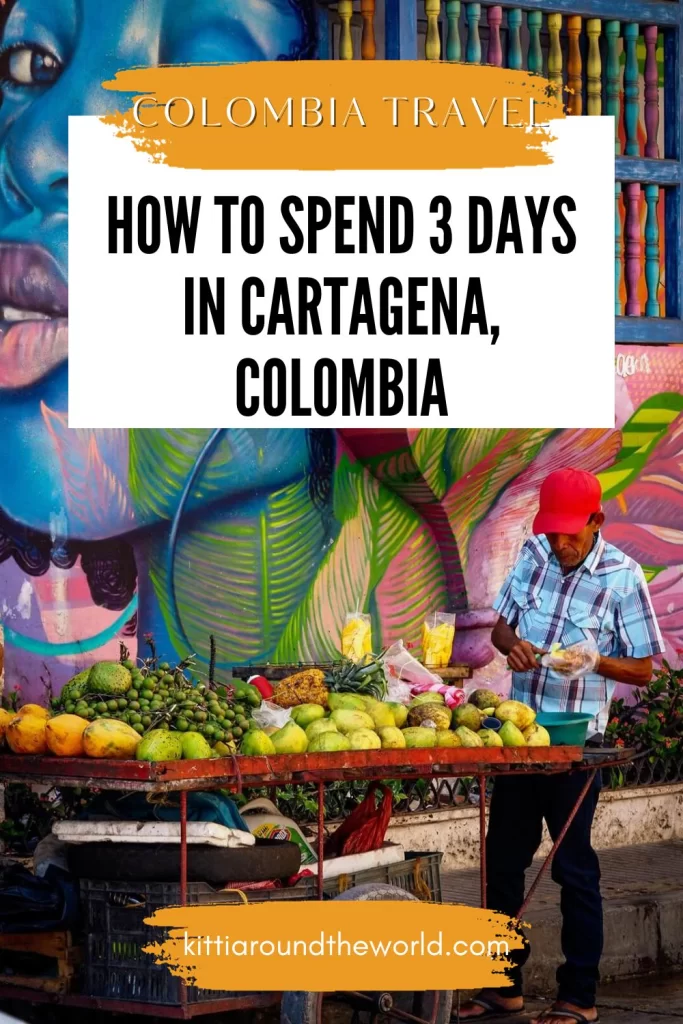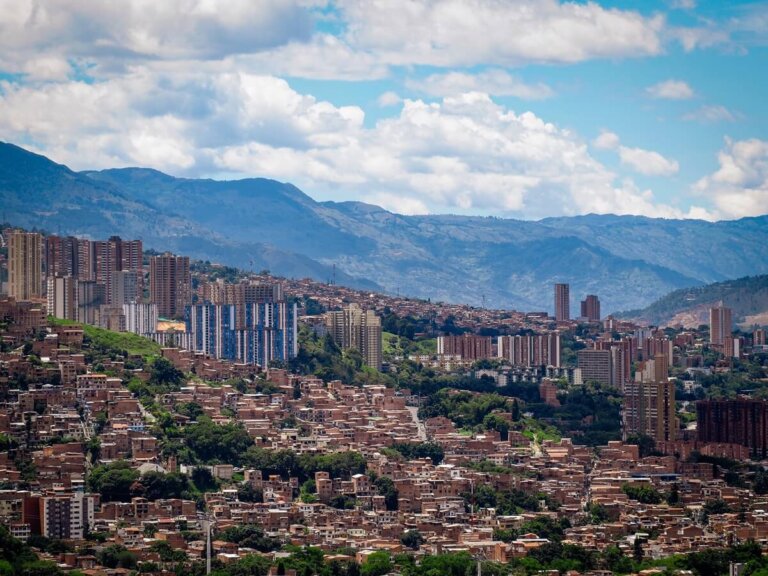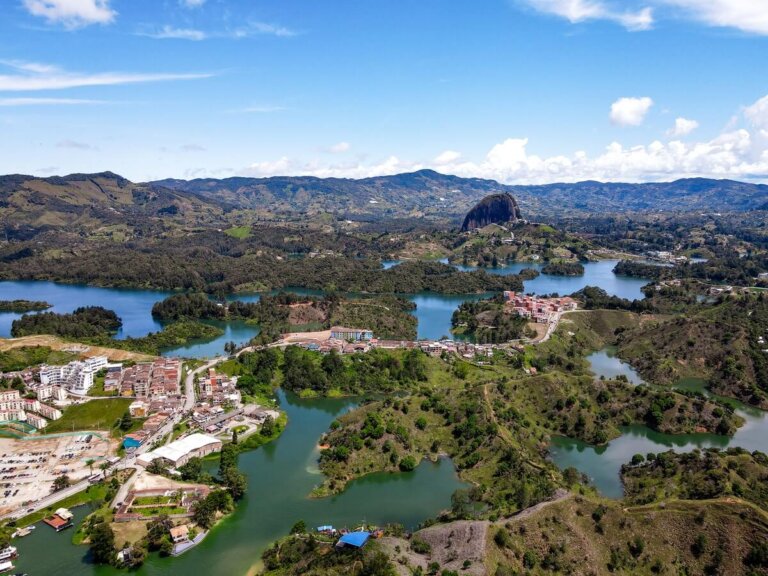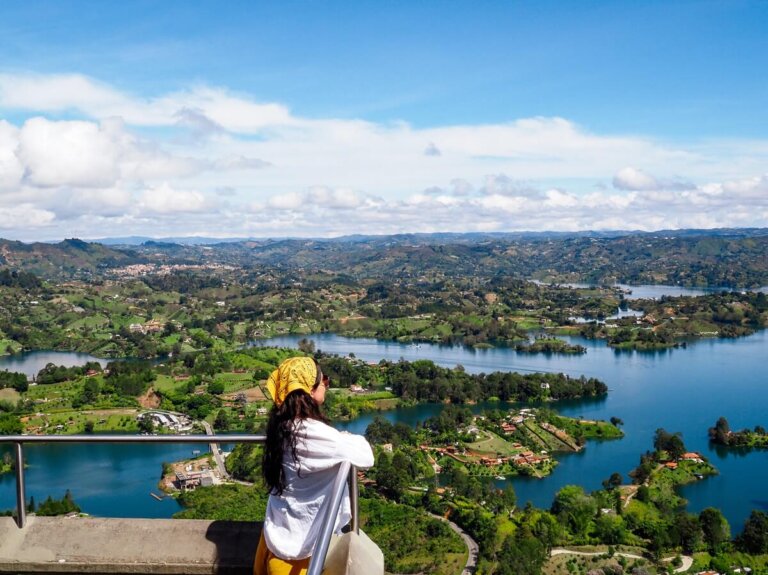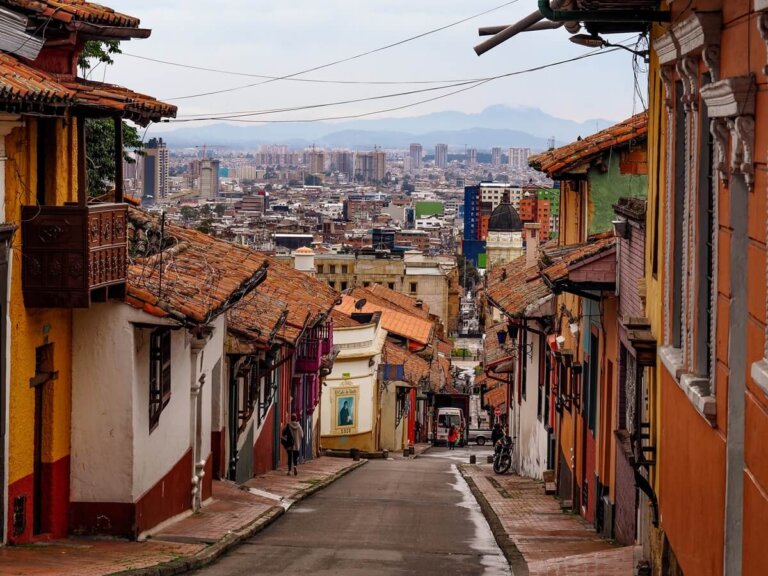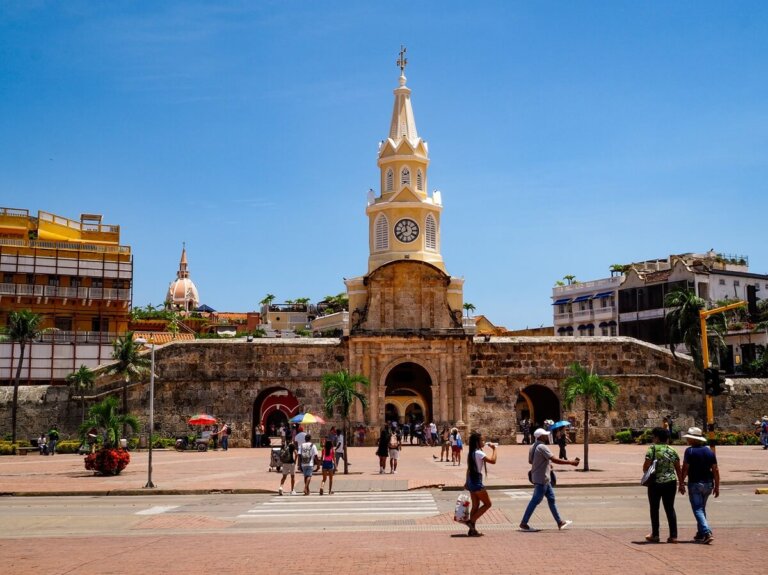How to Spend 3 Days in Cartagena, Colombia
In this guide you can read about how to spend 3 days in Cartagena de Indias, Colombia’s popular Caribbean city. Cartagena is filled with historical buildings, colourful streets, meaningful street art, plenty of cafes and restaurants and unforgettable sunsets. There are also some stunning beaches in the area. The city is a blend of the traditional and modern, which creates a unique atmosphere that makes it one of the most visited places in Colombia.
If you’d like to see what we got up to in Cartagena, then make sure to watch our dedicated Cartagena video on our YouTube channel. For more Colombia videos check out our Colombia Series.
Disclosure: This post may contain affiliate links, which means we may receive a small commission if you click a link and purchase something. Clicking these links won’t cost you anything, but it will help us to keep this site up and running! Learn more about our affiliate policy.
Introducing Cartagena de Indias
Located on the Caribbean coast of Colombia, Cartagena de Indias was founded in 1533 by the Spanish commander Pedro De Heredia. Of course, archeological evidence shows that the area was inhabited for thousands of years before the Spanish arrived.
A fire destroyed most of the settlement in the early 1550’s. However, it was quickly rebuilt, this time using stone as building material instead of wood. Cartagena became famous for its abundance of gold, which was stolen from the indigenous people, and was also an important port city.
Due to the city’s strategic location, many countries have tried to invade it over the years. These attacks were the main reason why the city wall was built, which along with much of Cartagena’s architecture, is now considered a UNESCO World Heritage Site. Cartagena was also the home of the Spanish Inquisition and a huge slave market. Millions of slaves entered the port and were sold at the Plaza de los Coches just behind the Clocktower. Many of them escaped the city and formed their own communities known as Palenques. The first official free community was called San Basilio de Palenque and was founded in 1691.
In 1811, the province of Cartagena declared its independence from Spain. However, it was only after another decade of sieges and battles that Cartagena de Indias was liberated in 1821.
Today, you’ll still see the remains of the old walled city, its colonial buildings and the African influence as you walk around Cartagena.
Our Top Travel Resources to Visit Cartagena
- 🛏️ Find your accommodations with Booking.com
- 🎫 Book an organised tour in Cartagena with GetYourGuide or Viator
- 📱Get an eSIM with Airalo to be able to use data
- 🛡️ Don’t forget to buy travel insurance via SafetyWing

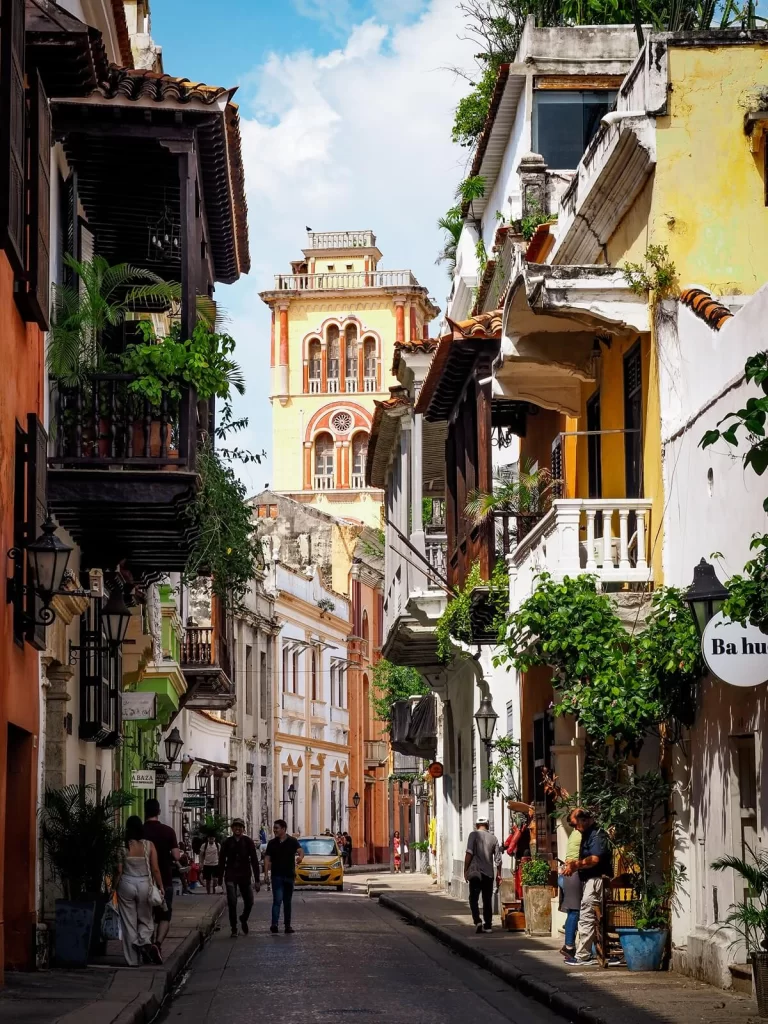
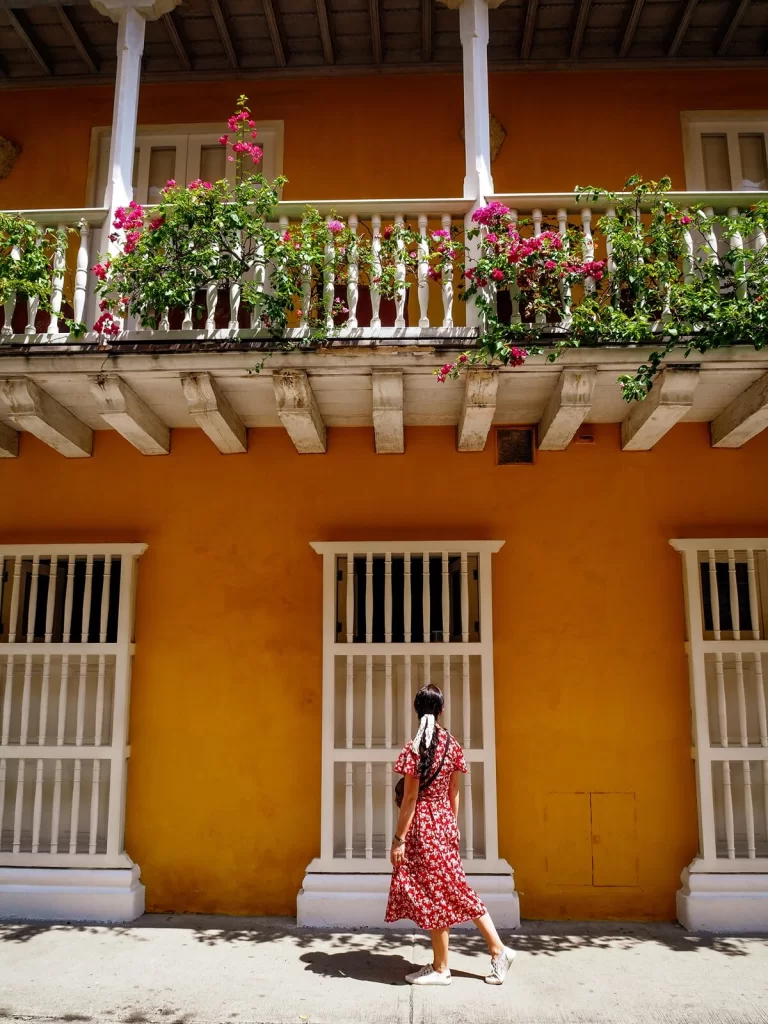
3 Days in Cartagena Itinerary: Best Things to Do
Day 1: Walk Around the Historic Centre of Cartagena
Morning
A great way to start your 3 days in Cartagena is to wander around its historic centre (El Centro). Cartagena’s old town is surrounded by 11 km’s of stone walls that are complemented by fortifications and bastions. The walls were built to defend the city after it had suffered many attacks, and it took about 200 years to complete the entire structure including the Castle of San Felipe and the underwater breakwaters.
They are considered some of the best preserved fortifications on the continent. At over 400 years old, the walls are considered a UNESCO World Heritage Site, attracting visitors from all over the world.
You’re most likely going to enter the walled centre via the iconic Clock Tower (Monumento Torre del Reloj). Once within the walls, you can freely walk around and admire the colourful streets and buildings. It’s a relatively small place, but there are a few points of interest you might want to see, such as Plaza Santo Domingo which houses one of Fernando Botero’s many sculptures, La Gorda Gertrudis. You can also check out Plaza de Bolivar and the Catedral de Santa Catalina de Alejandria next to it.
If you’d like to learn more about the walled city then check out this organised walking tour that includes entry to San Pedro Claver church and the Inquisition Palace.

Afternoon
You can spend your first afternoon in Cartagena visiting some of the museums within its walled historic centre. This will also provide you with some well needed respite from the strong sun and humidity.
If you didn’t have time to visit the huge Gold Museum in Bogota, then definitely don’t miss a visit to Museo del Oro Zenu in Cartagena. It’s free to enter, and even though it’s way smaller than the one in the capital, it still houses a large collection of gold.
You can also visit the Modern Art Museum (Museo de Arte Moderno Cartagena), the Naval Museum (Museo Naval del Caribe), or the Palace of the Inquisition (Museum of Cartagena de Indias). If you enjoy shopping, then you can also browse the many emerald shops for some jewellery, as well as other souvenirs shops and independent boutiques.

Evening
The best way to end your day in Cartagena is to watch the incredible Caribbean sunset. A lot of people go up to the famous bar called Cafe del Mar, which provides a nice spot along the city walls to watch the sunset from. But this comes with a hefty price-tag and a crowded experience, as one too many people want to be there! So, if you’re on a budget or want a more relaxed experience, then just head up to another spot on the wall where a mix of tourists and locals go to watch the sunset.
You can also join a sunset cruise from the city for a slightly different sunset experience.
Your day doesn’t have to end at sunset, and if you’d like to see the nightlife in Cartagena then definitely stick around a bit longer.

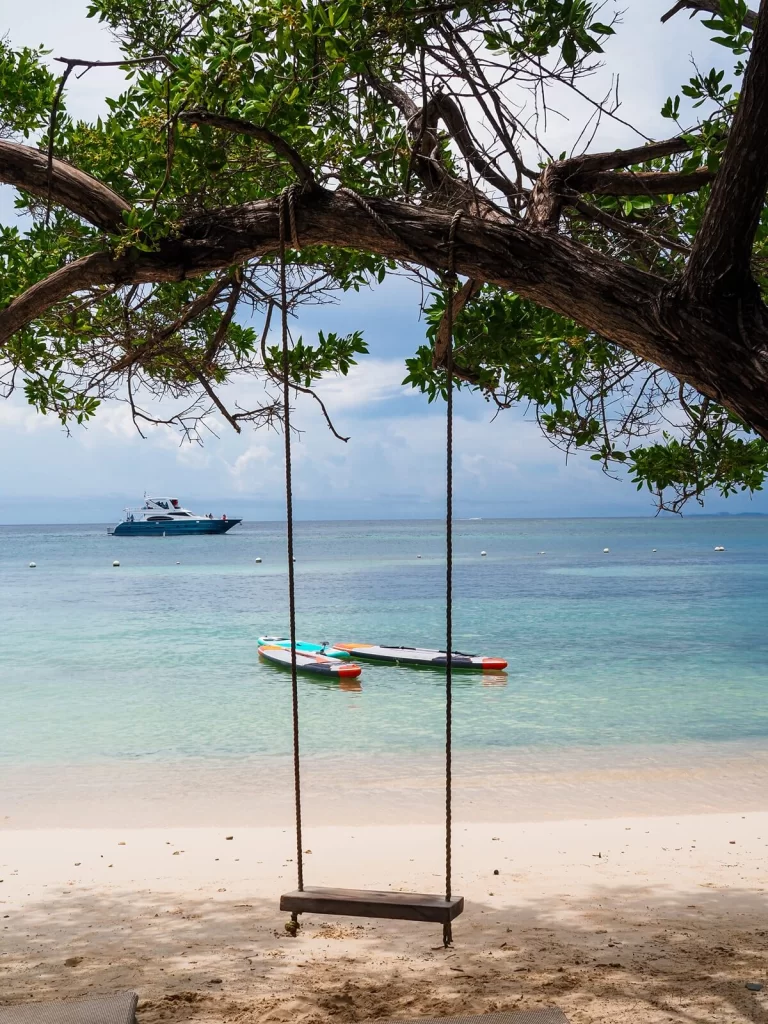
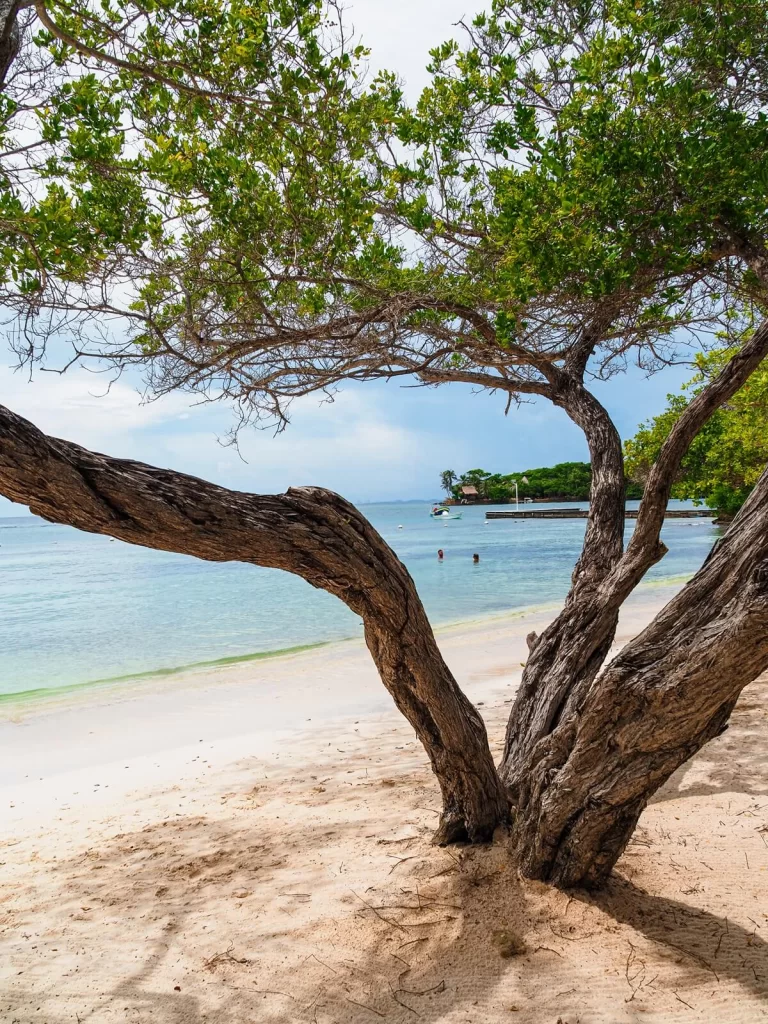
Day 2: Take a Day Trip to the Rosario Islands (Islas del Rosario)
After being on your feet all day walking around the bustling historic centre of Cartagena, it’s time to enjoy some of the incredible beaches around the city.
A lot of people head to Playa Blanca on Isla Barú, located about an hour away from Cartagena. However, for a more peaceful experience, you can take a day trip to the Rosario Islands instead.
Located an hours boat ride away from Cartagena, the Rosario Islands form an archipelago on the Caribbean coast. This group of 28 islands are a mix of public and private land. The Rosario Islands have been declared a national park since 1988 to protect the coral reefs surrounding them.
How to visit the Rosario Islands from Cartagena. Isla Grande is the largest island most tourists will visit or use as a base for additional excursions. To get there you can either book a day pass with one of the resorts, who take you to the island and allow you to access their facilities for the day. Boats leave early from Muelle de la Bodeguita, just a few minutes’ walk from the Clocktower Gate. Alternatively, you can go on a boat tour that involves more water activities but may not let you land on any of the islands.
If you have longer in Cartagena and are after a more relaxing experience, then you can even spend a night at one of the hotels on the island.
Note. You’ll have to pay the port fees separately in cash before you board your boat. This is 20,000 COP ($5USD) per person.
Top Tip. If you don’t want to skip a visit to Barú Island during your 3 days in Cartagena, then you can sign up for this boat tour that also includes a stop there.
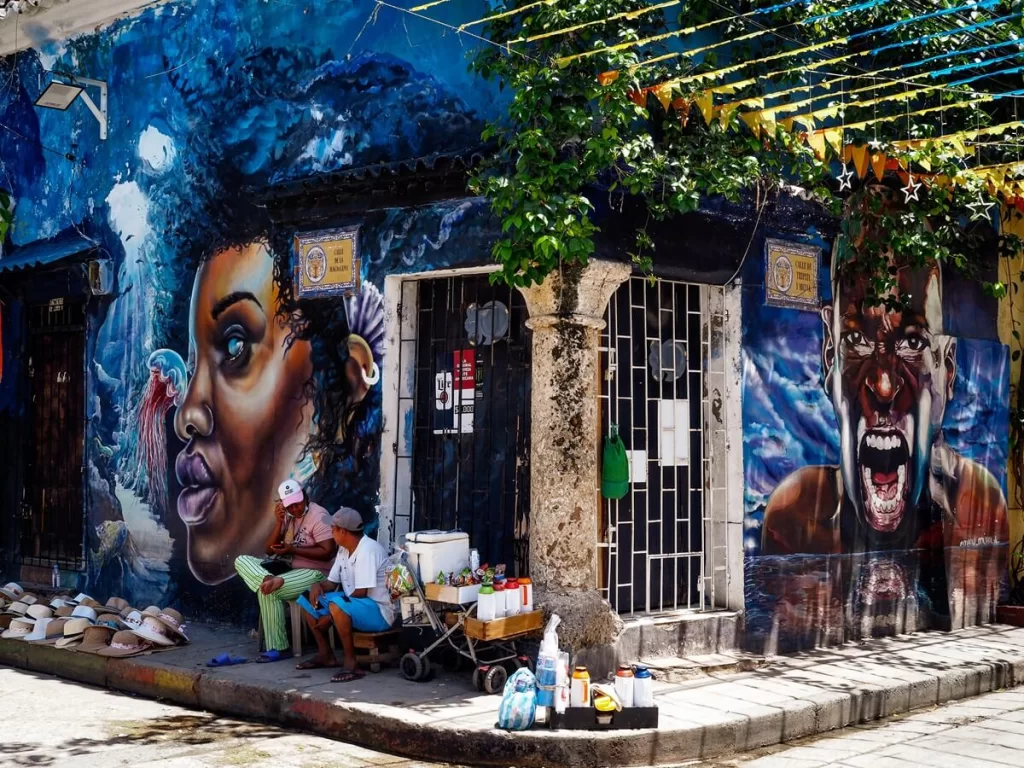
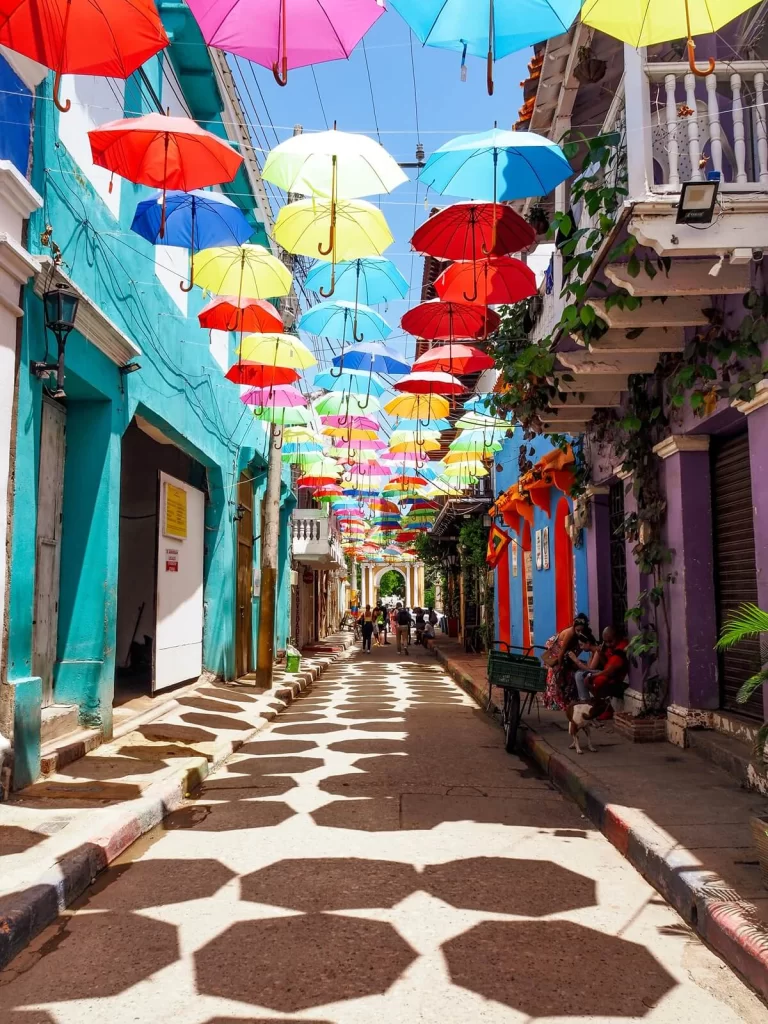

Day 3: Visit Getsemani and Manga Neigbourhoods
Morning / Afternoon
You can continue your 3 day Cartagena itinerary by taking a walk through the colouful Getsemani neighbourhood.
It used to be an area with a bad reputation. Today, however, this barrio is the hipster neighbourhood of Cartagena, where you’ll find impressive street art, trendy cafes, restaurants and picture perfect streets.
Most streets within the area are super colourful, adorned with murals or decorated with banners and umbrellas. The heart of Getsemani is the lively Plaza de la Trinidad. During the day you can enjoy people watching and street food here. Later in the evening, the square becomes even more vibrant, with street performances enjoyed by both locals and tourists alike.
If you want to learn more about this neighbourhood, then you can always join an organised walking tour.
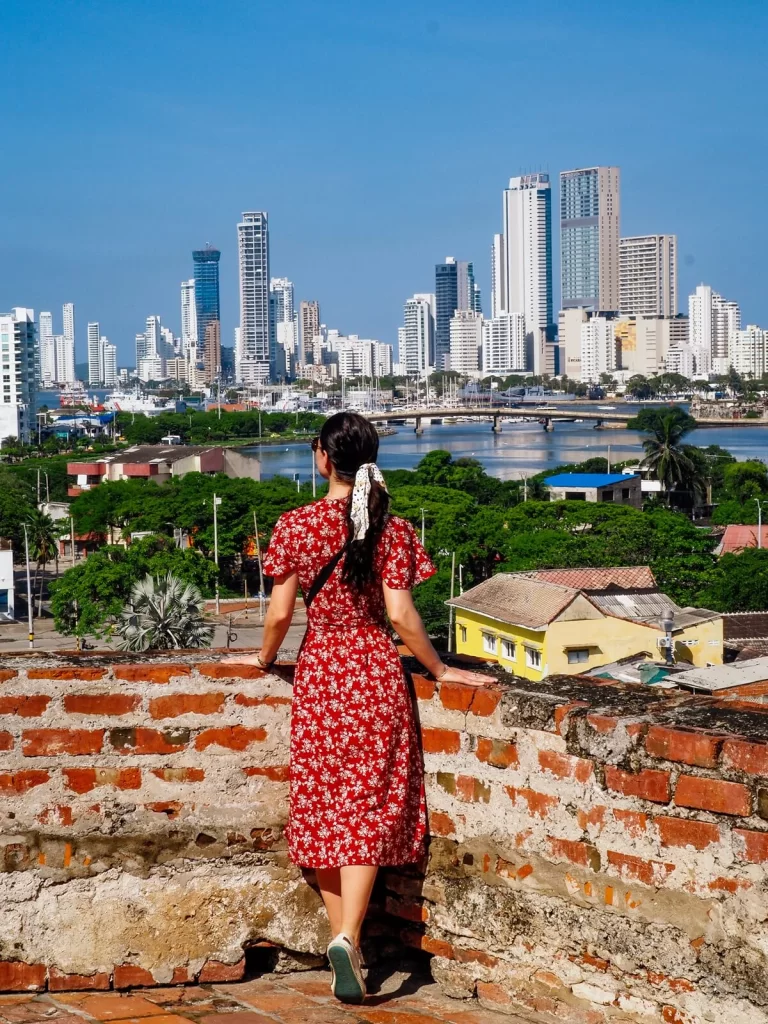
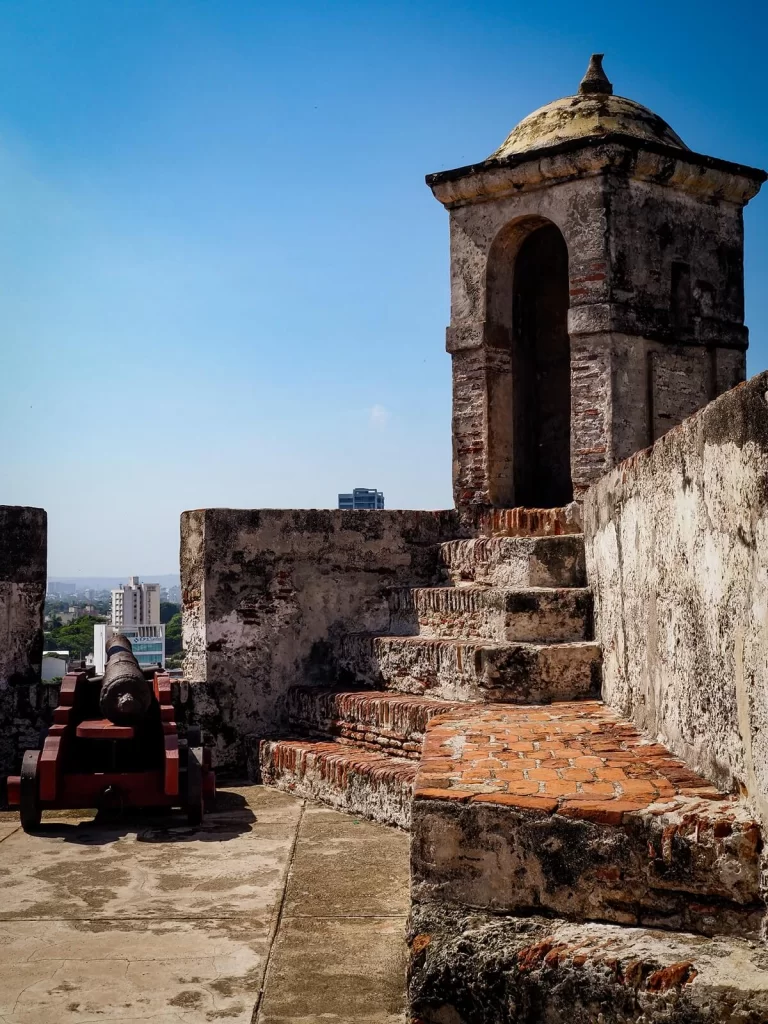
Located just outside Getsemani, on a hill called San Lázaro, is the San Felipe de Barajas Fort (Castillo San Felipe de Barajas). It is one of the most visited attractions in Cartagena.
The fort was built in 1657 during the Spanish colonial era as a way of providing protection against constant attacks on the city. Since 1984, it has also been part of a UNESCO World Heritage Site that includes the historic centre of Cartagena. The best part of a visit is the incredible views you get from the fort. Entry fee is 30,000 COP ($8 USD).
Top Tip. There’s no shade within the fort, so we highly recommend visiting either first thing in the morning or later in the afternoon. Also, make sure to wear plenty of sun protection and have enough water with you!

Afternoon / Evening
A great way to spend your last afternoon in Cartagena is to take a little walk around the Manga neigbourhood. Now, it’s definitely not the most exciting area of the city to visit. However, you can enjoy a bit more peace and quiet in this leafy, residential district after the bustle of the centre. You can also see quite a few Republican and Moorish manor houses here, and there are some great restaurants and cafes along the waterfront; perfect for a quick rest stop or an early dinner.
If you walk along the waterfront (Calle 24), you can enjoy another beautiful sunset overlooking the skyscrapers of Cartagena.
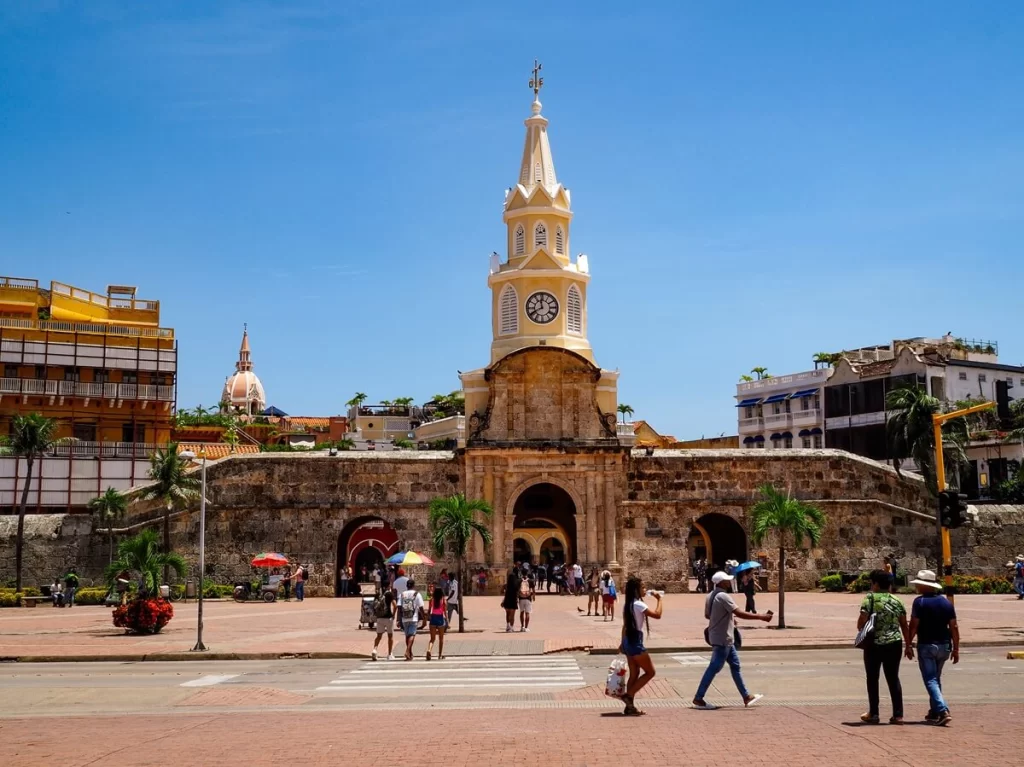
Where to Stay for 3 Days in Cartagena
Being a very popular place to visit in Colombia, Cartagena offers a wide variety of accommodations for visitors.
If you’d like to be close to everything, then we recommend booking your stay within the Historic Centre. You’ll be minutes from all the most important attractions, restaurants, cafes and bars.
Alternatively, you can also consider Getsemani, since it’s still only a short walking distance to all points of interest.
If you’re after a quieter stay, or you’re spending a bit longer than 3 days in Cartagena, then you could consider the quieter residential neighbourhood of Manga.


Where to Eat in Cartagena
As well as a large volume of accommodation options, there’s also no shortage of places to eat in Cartagena either. Below are some of our favourite places for either a full meal, a lunch deal or just a refreshing drink:
- Época Café Bar. (Nice coffee and lunch spot in the Historic Centre).
- Juan Valdez. (Basically the Starbucks of Colombia. Whilst it is a chain, we definitely enjoyed popping in here for a quick coffee and some pastries).
- Goyurt. (A great ice cream shop within the Historic Centre)
- Di Silvio Trattoria. (A huge Italian restaurant in Getsemani with a great selection of food and a nice atmosphere).
- Lunático. (Another lovely spot in Getsemani with a great view of San Felipe de Barajas Fort).
- Verona Pizzería Gourmet. (Located in the Manga district, it has some nice Italian food and very good coconut and hierbabuena (mint) lemonades).
- Atrium Pizza & Burger. (Another good option if you’re in the Manga area of Cartagena).

How to Get to Cartagena
Depending on where you’re coming from, there are a few options for how to reach Cartagena.
By Plane. The easiest and least time consuming way to reach Cartagena is by flying to Rafael Núñez International Airport (CTG). There are domestic flights between major Colombian cities such as Bogota and Medellin. Depending on where you’re coming from, there are many direct flights between Cartagena and other major cities in North, South, and Central America too, as well as some from Europe. You can check where you can fly direct to Cartagena from on this website.
The airport is relatively close to the centre, so you can either just jump in a taxi or book an airport transfer.
Find Flights to Cartagena✈️
By Bus. The most affordable way to get to Cartagena is by bus. It depends on where you’re coming from, but you can reach Cartagena from places like Santa Marta, Medellin or Bogota. Colombia is huge, so you’re most likely going to need to take an overnight bus if you’re coming from further south.
The main bus terminal (Terminal de Transporte Cartagena) is quite far outside of the city. You can take a local bus from there to the city centre, or opt for a taxi. We recommend the latter if you’re travelling with a lot of luggage or arriving later in the evening.
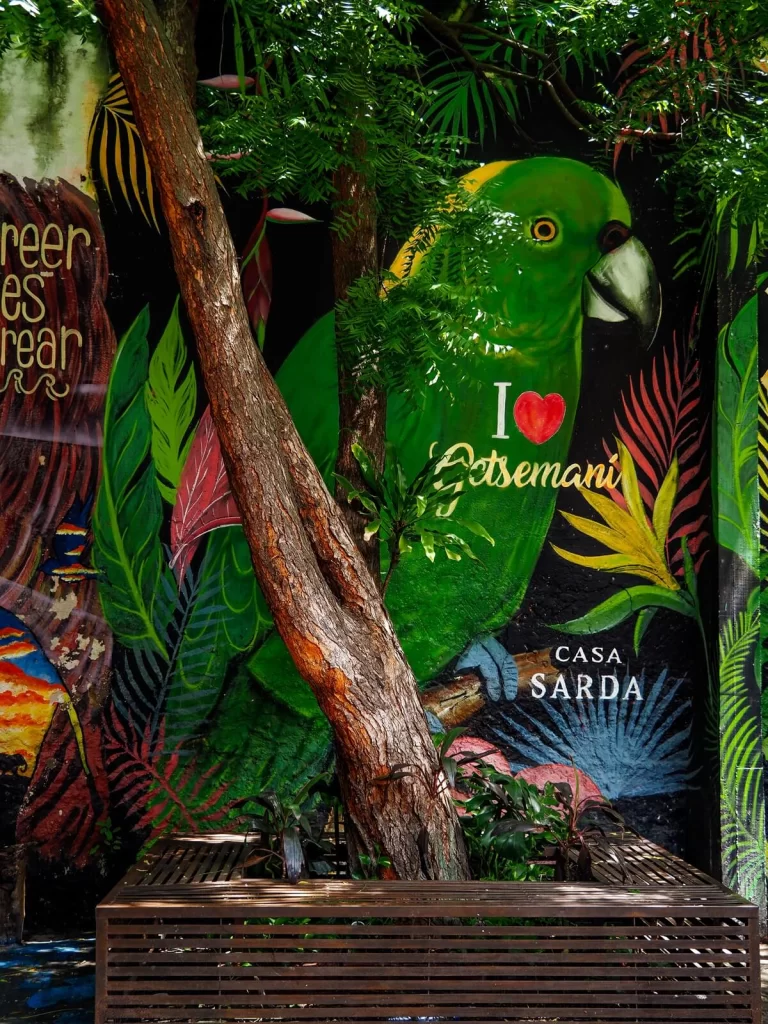
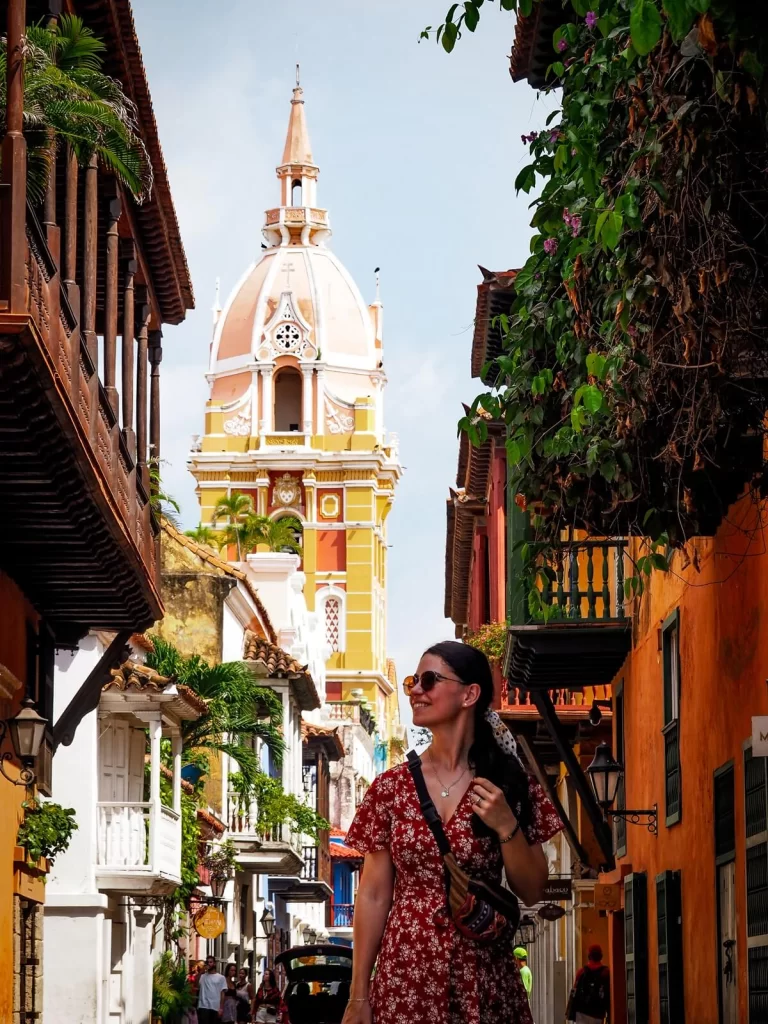
Is Cartagena Safe? – 3 Days in Cartagena Travel Tips
Cartagena is considered a safe city to visit. However, this doesn’t mean that you shouldn’t stay vigilant when walking around. Below are some of our tips based on research we’ve done and our own experience visiting the city.
- Always keep an eye on your belongings, especially as you walk around the busy historic centre.
- Cartagena is very hot and humid (80-90%!), therefore make sure to always wear SPF and use other forms of sun protection like hats and sunglasses. Don’t forget to drink enough water to stay hydrated because you’ll be sweating a lot.
- Please try to avoid taking a horse carriage ride. The horses didn’t seem to be in great condition, which is no surprise given they are out in the sun and heat all day.
- You can take photos with palenqueras (the ladies who wear vibrant dresses and carry bowls of tropical fruit on their heads). However, you’ll have to pay for the photo. Most of them are nice, but there are some who will come up to you to take photos and ask a really high price.
- There are also young street rappers who might appear out of nowhere and follow you around whilst rapping about your life. They are fun and talented, and we let one group sing for us, but after that we had to be very firm in saying no.
- We also read that vendors on Playa Blanca can be a bit pushy, so make sure to say no to anything you don’t want to pay for.
- Always have travel insurance, which can protect you from any unfortunate events.
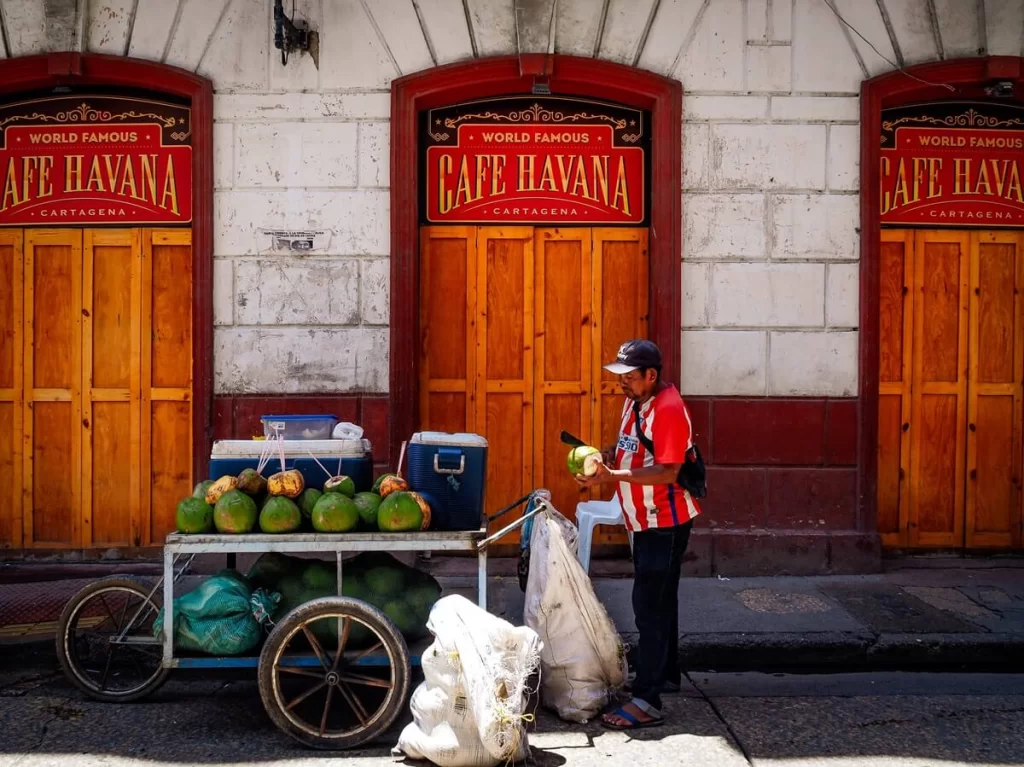
Final Thoughts on 3 Days in Cartagena Itinerary
As you can see, 3 days in Cartagena can easily be filled with a variety of activities. We enjoyed walking around this incredibly colourful city. Our favorite area was Getsemani, with its impressive murals and colourful buildings. It also felt slightly less hectic compared to the historic centre. We’re also glad that we picked a day trip to the Rosario Islands instead of Isla Baru. Spending a full day relaxing on a way quieter beach was just what we needed after walking around the busy city in the crazy heat and humidity. We’re not sure if we would’ve enjoyed a more crowded, public beach such as Playa Blanca as much.
Have you ever been to Cartagena de Indias? How many days did you spend there? What was your favourite thing to do? If not, how many days would you want to spend in Cartagena? Let us know in the comments below.
Now, let your adventure begin,

Our Top Travel Resources
Accommodation: For hotels we always use Booking.com and Hostelworld for hostels. We also book longer stays on Airbnb or Vrbo.
Flights: To find the best flight prices we always check Skyscanner, Google Flights or WayAway. Then we also check the airlines’ websites too for comparison.
Car Rentals: We use Discover Cars when we want to rent a car as it compares local, national and international companies.
Activities: If we book organised tours we always check either GetYourGuide or Viator.
Foreign Currency: Whenever we can we prefer to pay in local currency and for that we always use our Wise card. We can easily withdraw money from the ATM or pay by card at most shops and restaurants.
Travel Insurance: We never go anywhere without travel insurance. You never know what will happen on your trip, so good travel insurance like SafetyWing can protect you in case of injury, illness, theft and cancellations.
eSIM and VPN: To get data abroad we use Airalo which is an app that allows you to download a prepaid eSIM to your phone in over 190 countries. Make sure to have a VPN to avoid hackers accessing your personal data when using public WIFI. We use Surfshark which is the only VPN that offers one account on unlimited devices.

